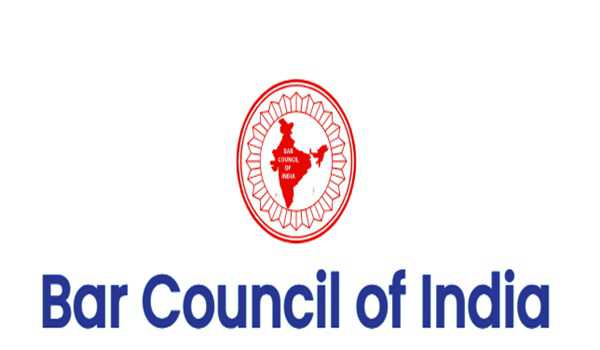The article has been authored by Mr. P Ravi Charan, Partner, Link Legal.
The maxim “Vigilantibus non dormientibus jura subveniunt” literally means that “the law aids the vigilant, not those who sleep over their rights”. In order to claim one’s right, she/he must be watchful of his/her right. Only those persons, who are watchful and careful of using his/her rights, are entitled to the benefits of law. Law confers rights on persons who are vigilant of their rights.
In the matter of State Bank of India Vs. M/s Gayatri Projects Limited, State Bank of India (“Bank”) has filed CP (IB) No. 308 / 07 / HDB /2022 (“Petition”) on 17.10.2022 and the same was registered on 18.10.2022 and the `Notice’, was ordered on 26.10.2022 to M/s. Gayatri Projects Limited (“Corporate Debtor”). On 04.11.2022, the Corporate Debtor, was called absent, and since the Corporate Debtor, was served, `Service’ was held `sufficient’, and set ex-parte and the matter was directed to be listed on 10.11.2022. On 10.11.2022 the Petition was heard ex-parte and reserved for `Judgment’. The Petition was admitted by the Adjudicating Authority on 15.11.2022. Assailing the validity, propriety, and legality of the impugned order dated 15.11.2022 passed in Petition, an appeal was preferred before Hon’ble NCLAT. One of the contentions raised in the appeal was that the proceedings under Section 7 of the Insolvency & Bankruptcy Code, 2016 (“Code”) are not to be concluded unless and until, the `respective parties’, are provided with a fair and `reasonable opportunity of hearing them and reliance was placed on Rule 37 of NCLT Rules, 2016 (“NCLT Rules”) and that private notice issued was not in consonance with Rule 38 (1) of NCLT Rules and further that the same would not amount to sufficient compliance of Rule 37 of NCLT Rules.
A classic case where Section 7 was admitted on merits in span of less than 30 days. The Bank contended that under Rule 38 (2) of the NCLT Rules, an Adjudicating Authority, was
empowered to direct the Parties, to undertake `Private Notice’, on the Corporate Debtor, and in fact, the process, prescribed under Rule 38 (2)(c) of NCLT Rules was followed by AA and accordingly notice was served on the Corporate Debtor by registered post as well official email of the Corporate Debtor in the Corporate Debtor’s Master Data. Also that on 10.11.2022, the following `Petitions’ against the `Corporate Debtor’, were listed before the `Adjudicating Authority’, namely; (a) CP No. 32 / 2022 (filed by Bank of Baroda) along with IAs as item 108; (b) CP No. 26 / 2022 (filed by IL & FS Financial Comp. Services Limited) along with IAs as item 109; (c) CP No. 308 / 2022 (filed by SBI as item 111).
Hon’ble NCLAT while analysing the contentions raised observed that the task of an AA under the Code is to provide a `reasonable opportunity’, to a Corporate Debtor and to ascertain the factum of `Default, from the records of `Information Utility’ or from the `evidence furnished’, by the `Financial Creditor’ and where the `Record’ showed that an `Application’ / `Petition’ was preferred on the `Proforma’, prescribed under the Rule 4 (2) of the `Insolvency and Bankruptcy (Application to Adjudicating Authority) Rules, 2016’, and if an `Adjudicating Authority’, was satisfied, if the `Default’, had taken place, there is no `illegality’, in `admitting’ the `Application’, filed by the `Financial Creditor’, under the Code. An AA is not one, to ascertain the `Quantum Sum’ or `Default’ or to pass a `Decree’, as to how much exact amount is actually / really due to the `Financial Creditor’. Further, an AA, is not to decide a `Money Claim’ or `Suit’ and is not a `Civil Court’, to determine the `Violation of a Contract’, between the `Parties’.
It was also observed that where post-filing, the `Notice’, as required under Rule 4 (3) of the Insolvency and Bankruptcy (Application to Adjudicating Authority) Rules, 2016, was sent to the Corporate Debtor, and if the said Corporate Debtor, does not appear, before the AA, the Petition, filed by a Financial Creditor, can be determined `Ex-parte’. There is no prohibition in Law and a mere running of the eye, in respect of Rule 38 - Service of Notices and Processes’, of the NCLT Rules and the AA as per Rule 38 (2) of the NCLT Rules, 2016, was enjoined to direct the Parties / Litigants, to undertake `Private Notice’ on the Opposite Party and that AA has followed the `Mandate’, prescribed under Rule 38 (2) (c) of the NCLT Rules, which cannot be found fault with, on any score. More importantly to the facts of the case, the Appellant, had tacitly admitted that they received the `Email’ (which went to the Spam Folder), and the `Registered Post’ from Bank was misplaced by the Security of the Corporate Debtor and therefore, it is crystalline and clear that Corporate Debtor was provided with an `opportunity’, to project the available defences in `Law’, but it was not availed. As such, there is no room for complaint, in regard to the `Principles of Natural Justice’, being `violated’. Further, the Code received the assent of the Present on 28.05.2016 and was published in the Gazette of India, Ext; Pt. II, S.1 dated 28-5-2016 and as a matter of fact, NCLT Rules was made by the Central Government in exercise of powers, conferred by Section 469 of the Companies Act, 2013, came into force on the date of publication in the `Official Gazette’ (vide G.S.R.716 (E) dated 21-7- 2016, published in the Gazette of India, Ext., Pt. II, S 3 (i), dated 22-7- 2016. Section 5 (1) of the Code defines, an `Adjudicating Authority’, for the purpose of Part II, meaning `National Company Law Tribunal’, constituted under Section 408 of the Companies Act, 2013 and section 410 of the Companies Act, 2013, provides for the `Constitution of Appellate Tribunal’ (`National Company Law Appellate Tribunal’). Further, Section 238 of the Code, will govern the `Parties’, in view of the fact that the `Code’, is a `Special’ one, overriding any other `Law’, for the time being in force and that undoubtedly, the Central Government, in terms of Section 239 has made `Rules for carrying out the provisions of the Code which came into force from 01.12.2016. In fact, the Insolvency and Bankruptcy (Application to Adjudicating Authority) Rules, 2016, shall apply to the matters relating to the Corporate Insolvency Resolution Process, and although, the NCLT Rules, is made by the Central Government, as per powers, showered by Section 469 of the Companies Act, 2013, for matters to be dealt with under the Companies Act, 2013. The AA, as per Section 5 (1) of the Code is the National Company Law Tribunal constituted under Section 408 of the Companies Act, 2013 and there is no embargo in law, upon the AA, to make use of the NCLT Rules, wherever it is found necessary, at the time of dealing with the matters, pertaining to the Corporate Insolvency Resolution Process, under the Code. The Corporate Debtor in its Annual Report for the year 2021-2022 had admitted the `Default’ / `Debt’, under Section 7 of the Code and that a `Financial Creditor’, before an AA, was to establish the `Debt’ and `Default’, and the Corporate Debtor, had not displaced the aspect that there was no `Debt’ and `Default’. The prevalent of `Default’, is a `Sine Qua Non’, for admitting an Application / Petition, under the Code, in respect of the Insolvency Proceedings. Even though, a plea was taken that the Corporate Debtor / Flagship Company of the well-diversified M/s. Gayatri Group, with an Annual Turnover of Rs.3463.00 Crores, etc., and that Corporate Debtor, is a going concern with Arbitral Awards, in its favour, amounting to Rs.850 Crores only, which are at the execution stage and Hon’ble NCLAT on going through the impugned order dated 15.11.2022 came to a consequent conclusion that there was overwhelming evidence of `Debt Due’, payable in `Fact’ and in `Law’, and `Default’ and that the AA, had exercised its subjective discretion in a sound, judicious and right thinking manner, and accordingly `Admitted’ the Petition filed by Bank and accordingly dismissed the appeal. The said order of Hon’ble NCLAT was assailed before the Hon’ble Supreme Court which was eventually dismissed the appeal on 20.01.2023. In a nutshell, the entire process of challenge to the admission order of AA was put to rest in a span of less than 75 days and finality was given to the order passed by AA.
Conclusion:
The entire facts remind us of the old age legal maxim that “law aids the vigilant, not those who sleep over their rights” and nobody can take their own sweet time to seek reliefs, as only creaking wheels get oil or crying baby’s milk. It is a classic case wherein CIRP was commenced within a period of exactly 14 days of the service of Notice and 20 days after the `issuing of Notice’ and the `Adjudicating Authority’, had `Reserved’ the matter for `Judgment Ex-parte’ and passed the admission order on merits within a period of total span of less than 30 days. The judgments of AA and Hon’ble NCLAT carefully considered the timelines keeping in view the objective of the Code and passed a well-rounded decision which is a welcome development. The decision enhances the strength of the line of judicial precedents that highlight the importance of adhering to the timelines in the insolvency resolution process.
Social media is bold.
Social media is young.
Social media raises questions.
Social media is not satisfied with an answer.
Social media looks at the big picture.
Social media is interested in every detail.
social media is curious.
Social media is free.
Social media is irreplaceable.
But never irrelevant.
Social media is you.
(With input from news agency language)
If you like this story, share it with a friend!
















0 Comments